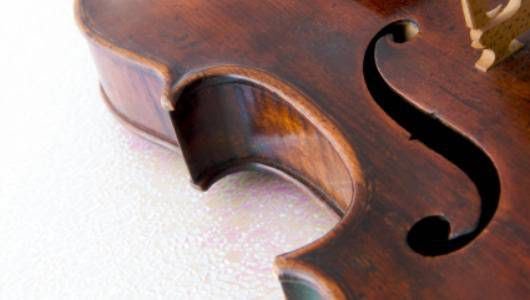The kings of musical instruments
Tree scientists believe Stradivarius violins produce such brilliant and powerful tones because of the quality of the wood used to make them.


Violins, violas and cellos belong to the violin family. They are the indisputable kings of all musical instruments. The violin has been said to portray and inspire every emotion imaginable, from the braying of a donkey to delivering a tune of heart-rending beauty. Only the human voice can match it. Stradivarius or “Strads” are the most famous and sought after violin family.
Andrea Amati made the first violin in 1564 in Cremona, Italy. One hundred and two years later in 1666, Stradivari made his first violin. The craftsmanship that went into building these splendid works of art is breathtaking. The violin has rightfully so been compared to the female silhouette — narrow-wasted and voluptuous.
Violins have a hollow body or soundbox with a back and a belly. The top of the soundbox or belly has two sound hole curves in toward the center which resemble the letter “f” and the letter “f” reversed. The belly and back are held apart by ribs around the sides and a neck that rises from one end toward the head of the instrument. This design has not changed from the original Amati violin.
Four strings are held under tension. They span from the tailpiece over a bridge that supports them over the top of the soundbox along the neck to the head. They vibrate usually by rubbing a horse hair bow but also by plucking with fingers or striking with the wood of the bow. The bridge transmits the vibrations to the soundbox, which amplifies the notes we hear.
Experts believe that Strads are unique for a number of reasons. Stradivarius was unquestionably a genius. He was an extraordinary woodworker, luthier, and some believe he apprenticed as a young boy with the great Amati. His early Strads were decorated with immense artistry.
The different kinds of wood that Stradivarius selected for his instruments were crucial. He used close-grained, high-elevation European spruce for the belly because it vibrated in sympathy with the strings. The back, which acts as a reflective plate, was made of river maple, a much harder wood. The neck along, with its magnificent scroll, also was carved from maple. The ribs were made of thin strips of maple bent under heat to form four main curves making up the hourglass shape of the body. The inside edges of both the back and the belly are called perflings. In order to protect against cracks, perflings were made of three narrow strips of inlay; the outer two of pear wood were stained black, while the inner was made of poplar.
The varnish contained an Italian volcanic ash. It made the spruce bellies of Strads look like various shades of amber while the maple backs resembled that of tiger stripes.
All 600 remaining Strads are named, and they produce brilliant and powerful tones. Why? Tree scientists believe that it has to do with the quality of the wood, in particular the growing conditions that existed in the 17th and 18th centuries.
From about 1500 to 1800 AD, Europe dropped into a time called the “Little Ice Age.” Cold temperatures occurred especially between 1645-1715 AD called the “Maunder Minimum” after the English astronomer Edward Maunder, where the Thames and the Dutch Ijsselmeer rivers regularly froze.
Climate scientists believe a scarcity of sunspot, cooler patches or spots on the sun, during that time accounted for much colder conditions. Oddly, decreased sunspot activity results in cooler temperatures on Earth. For example, during one 30-year period in the Maunder Minimum, only 50 sunspots occurred rather than the more typical 40,000 to 50,000 sunspots.
Tree growth especially during Antonio Stradivari’s lifetime was very slow. Tree ring patterns were narrowly spaced: Wood cells were few but dense. Growing conditions of the “Maunder Minimum” have never occurred since and all Strads contain wood from this time period. The unique wood properties have significantly enhanced the harmonics of his instruments.
Nicolo Paganni, the great 19th century violinist, was quoted as saying “Stradivarius only used the wood of trees on which the nightingales sang.”
Wood grown during the “Little Ice Age” along with Stradivarius’s Renaissance technology is a superb combination — nothing made since can match the quality nor hold a tone for longer.
Dr. Reese Halter is a conservation biologist at Cal Lutheran University, public speaker and founder of the international conservation institute Global Forest Science
Follow me@ayeezzubair
Thank you 🙂
nice instument